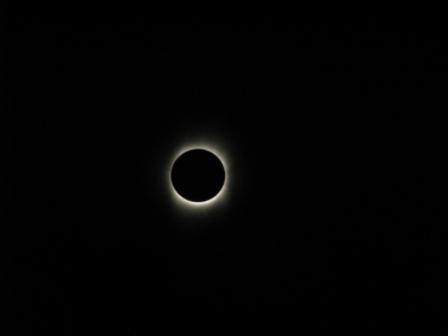Despite treacherous weather Tuesday, hundreds of millions still watched daylight turn to darkness during the century’s longest solar eclipse over parts of India and China. The event, also this year’s only total solar eclipse, occurred as the Moon passed between Earth and the Sun, leaving swathes of southern Asia in the Moon’s shadow for up to 6 minutes.
Many who saw the show participated in solar-eclipse tours, including Astronomy Editor David Eicher, Senior Editor Richard Talcott, and Senior Editor Michael E. Bakich. Eicher called the moment of totality, when the entire Sun was blocked out except for the ghostly corona, spectacular.
“The eclipse was FANTASTIC!” Eicher said. “We had a beautiful view of it and I suspect were very lucky given the weather in the region.”
In fact, not all were so fortunate. Bakich’s tour got stuck in a downpour. “It did get unearthly dark tho[ugh],” he said, and the “Chinese solar eclipse coverage on TV was terrific.” So even those who missed out on the actual eclipse had a memorable experience.
Many areas that didn’t see totality still got to see quite a spectacle. As Astronomy magazine Columnist and Contributing Editor Stephen James O’Meara recounted in a blog post, a partial eclipse was visible as far away as Hawaii. Despite only about 10 percent of the Sun being blocked, it was still a beautiful sight.
“The sky was perfectly clear, and the orientation of the Sun and Moon during the eclipse made them look like a giant eyeball in the sky,” O’Meara wrote. “I was expecting the Moon to kiss the Sun, and then move off. Instead, the two battled for nearly an hour. It was a really special partial eclipse.”
Eicher and Bakich have also been blogging about their tours, which include stops at the Three Gorges Dam and visiting Xian’s Terra Cotta Warriors.










